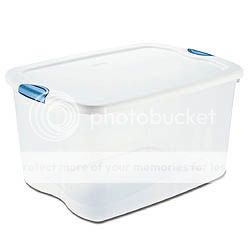
What are the advantages and disadvantages of each?
(This thread is inspired by a photo with cameras kept in airtight NTUC plastic)
I'm thinking of getting the plastic because it saves me more shelf space.
;p

I
I understand from a fellow cs member that electricity bill for the dry cabinet would not exceed more than $4.
yes you may, you can buy a toaster to toast the silica gels, I'm sure you wound't want to mix silica gels with food, cos silica gels is definitely not food...i heard that with silica gels, you can actually heat them to get the moisture out so that they can be re-used infinitely. don't know if this is true but if so, it definitely sounds less costly than electrical bills ... but then again, it is more troublesome compared to using a dry box.
taken from hereHazards
Alone, silica gel is non-toxic, non-flammable and chemically unreactive. However, some of the beads may be doped with a moisture indicator, such as cobalt (II) chloride, which is toxic and may be carcinogenic. Cobalt (II) chloride is deep blue when dry (anhydrous) and pink when moist (hydrated). This is one reason most silica gel packets are labeled as dangerous or poisonous when eaten.
Crystalline silica dust can cause silicosis but synthetic amorphous silica, which is what silica gel is, does not cause silicosis .[citation needed] A chemically similar substance with far greater porosity is aerogel.
why is there a need to heat the silica gels?? dont it already take up the moisture??
i heard that silica gel is also microwavable :bsmilie:
advantage is cheap
Disadvantage is you cannot control the humidity level and need to regen the silica gel every now and then.
$4 afew years ago? Did you know that electricity just gone up like close to 20%? If you are talking about 5 yrs ago, the currently price should be more than 50% compared to back then.
Yes, I bought a Dry Cabinet recently, but I store more than camera stuff. I have stamps & old $$ notes in them to justify the cost.
But i am not going to use the wok or the microwave to cook / heat my food, and the cobalt chloride component is not exactly really something i want to breath too much when it fumes or anything
Ryan

